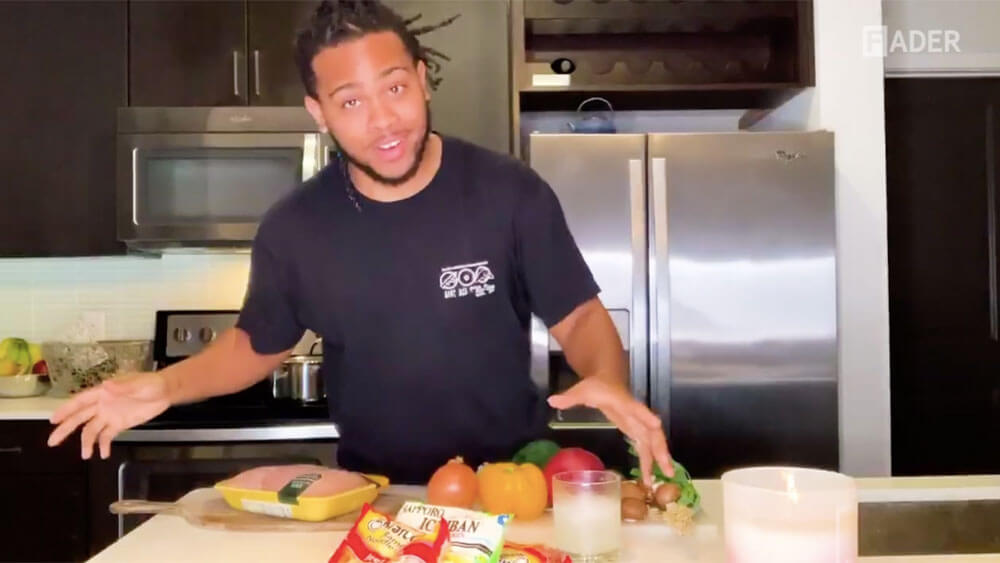
The Fader presented “Quarantine Cooking with Childish Major,” in which the rapper showed how to make his chicken “low mane,” as he called it.
The city of Austin was eerily quiet in March due to the cancellation of SXSW. In addition to the lack of sessions at the Austin Convention Center, the parties and concerts that stretch through the streets of the capital of Texas were nonexistent. One of the most notable absences was Fader Fort, a multi-day concert of some of the rising stars in music. Curated by The Fader, a music and lifestyle publication, the experience has been part of SXSW since 2002. Rather than take a year off though, Fader decided to host Digital FORT, a two-day “online music care package” on March 31 and April 1.
I logged on at 10:00 a.m. EST on the opening day and did what every online user has been doing lately: Waited for the livestream to begin. However, I couldn’t find a live broadcast. After searching Instagram, Facebook, and every other corner of the internet, I realized I wasn’t the only one who felt lost.
Instead of hosting a livestream, Digital FORT opted for posting content every 10 minutes throughout a nine-hour window each day. Initial plans were for a one-day event, but the outlet expanded after so many artists expressed interest in participating. It was unorthodox compared with the explosion of live-streamed programming that musicians have been offering in the past two weeks, but the approach helped avoid the hiccups of tech glitches and potential headaches of trying to coordinate broadcasting from dozens of living rooms, studios, and other remote environments. Jon Cohen, co-founder and co-CEO of The Fader, told AdWeek that developing the alternate plans had “limitations” due to employees working remotely and artists being scattered around the world.
“Organizing this has been quite a challenge, but we really took all the barriers down and made sure we were flexible in terms of what the artists can deliver and how they can deliver it,” Cohen said. “We didn’t want to be limited by the way people normally do livestreams. We basically asked the artists to get us their content in any way that was convenient to them.”
That convenience also empowered artists to create content that stretched beyond their typical performances. Rapper Animé gave fans a tutorial on making a smoothie. A member of Phantogram introduced viewers to her dog. Two musicians interviewed each other via FaceTime. The program was a surprising mix of exclusive performances, cooking shows, dance-offs, and other activities that would not have happened in a standard stream-yourself-playing-some-songs format.
As organizers of all kinds of events work to embrace digital engagement strategies in the midst of the COVID-19 pandemic, the Digital FORT was a reminder that the experience doesn’t have to be live. Instead, it needs to be authentic, fun, and memorable. For bonus points, it can make a difference, and Digital FORT did just that. The top of the page — before getting to any of the content — directed viewers to a hub of ideas for how to help those in need. To learn how you can contribute, visit the Fader resources story.
David McMillin is an associate editor at Convene.
What Events Professionals Need to Know About COVID-19
PCMA has created a COVID-19 resources page to help event professionals find reliable information about the pandemic and to share events industry-related resources to ensure they are prepared now and in the future.
